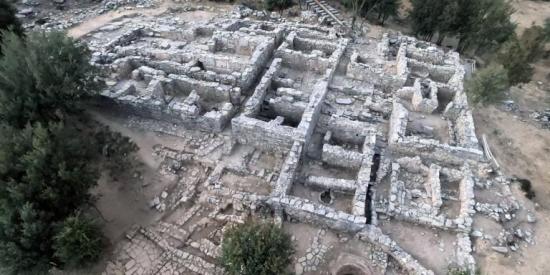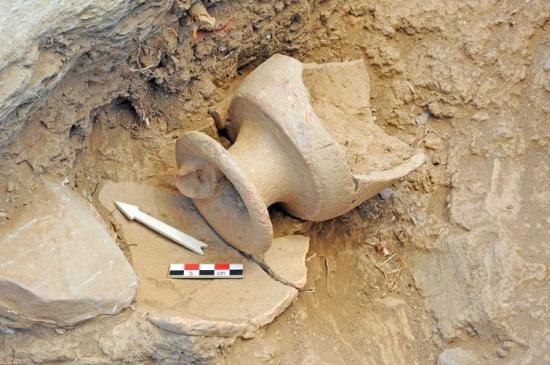Patricia Claus
Source - https://greece.greekreporter.com/2020/10/03/new-secrets-unearthed-at-minoan-palace-of-zominthos-on-crete/

The Palace of Zominthos, on Crete. Credit: Greek Ministry of Culture
An elegant summer palace once belonging to the Minoan aristocracy at Zominthos on Crete, first discovered in 1982, has yielded many more of its priceless secrets in a recent dig.
It was found in this summer’s dig that the original structure may have been up to three stories high and to date back to 2,000 BC. This year’s excavations of the building, measuring 1,600 square meters, or 17,222 square feet, have also shown that the edifice contained ramps, a series of apartments and even religious altars.

One of the ramps. Credit: Greek Ministry of Culture
Under the direction of Honorary Director of Antiquities Dr. Efi Sapouna- Sakellaraki, the aim of the new dig was to clarify what served as the access to the northern entrance to the main building and to verify what had been discovered through biomagnetic research north of the main building.
This year’s excavations disclosed to archaeologists that the usage of the building actually extended back as far as 2,000 BC — and possibly further. From 1,700 BC onward it expanded into the surrounding area, and this year’s work uncovered two new complexes further out form the main building.
The archaeologists now believe that the northern slope of the hill on which the palace is located holds even more historical secrets, and they plan to investigate this area further in the future.

Credit: Greek Ministry of Culture
As shown in these photos from the Greek Ministry of Culture, this year’s dig proved that access to the northern entrance was made possible by the construction of a stone ramp, which may have been built as early as 1,900 BC. The ramp ended in a robust retaining wall.
The area was paved with stones twice during the years 1,700 -1,600 BC and an oblique ritual corridor had been formed in the retaining wall itself.
Researchers believe that the palace of Zominthos served political, economic and religious functions throughout its existence. It is very near the religious center of Ideo Andros, which had an influence spreading throughout the Eastern Mediterranean, the New East and even Egypt.

Credit: Greek Ministry of Culture
The remains of ceramics, in particular cups from what archaeologists term the “MM period,” associated with Knossian pottery, have been found at the site, which date the use of the structure back to 1,800 BC.
In addition, three stone drainage pipes in the main building complex have also been identified now by the archaeologists down at the level of what archaeologists call the YM IA period, approximately 1,650 BC. (group 1)

Credit: Greek Ministry of Culture
Of particular note is the “Northern sanctuary” from the first complex, from the period of the new palaces. Excavated first in 2019, this area was found to have an altar paved with stones; vessels associated with rituals, including rhymes, were found at this site as well.
In what was perhaps the most serendipitous act of the entire dig, a sudden rainstorm revealed a small golden plate to archaeologists. New excavations of the layer underneath the altar where the plate was found uncovered a piece of burned wood. Scattered all around this wood were what the researchers called “a multitude,” approximately 90, of other small, golden plates.
Additionally, carved ivory idols which were clad in a thin layer of gold, similar to those found at Archanes and Paleocastro, were found in this area. On this same level was also found a stone and ritual grater and a seal featuring an animal.
Researchers now believe that the subsequent occupants of the building had preserved the remains of the ruined idol after the original palace had been destroyed, and then constructed a new stone altar atop it.
Even further down and to the north of the site, archaeologists uncovered an older sanctuary from the period of the old palace, from 1,900 BC, with fragments of figurines representing people and animals nearby, including a beautiful female figurine who has now been dubbed “The Lady of Zominthos.”